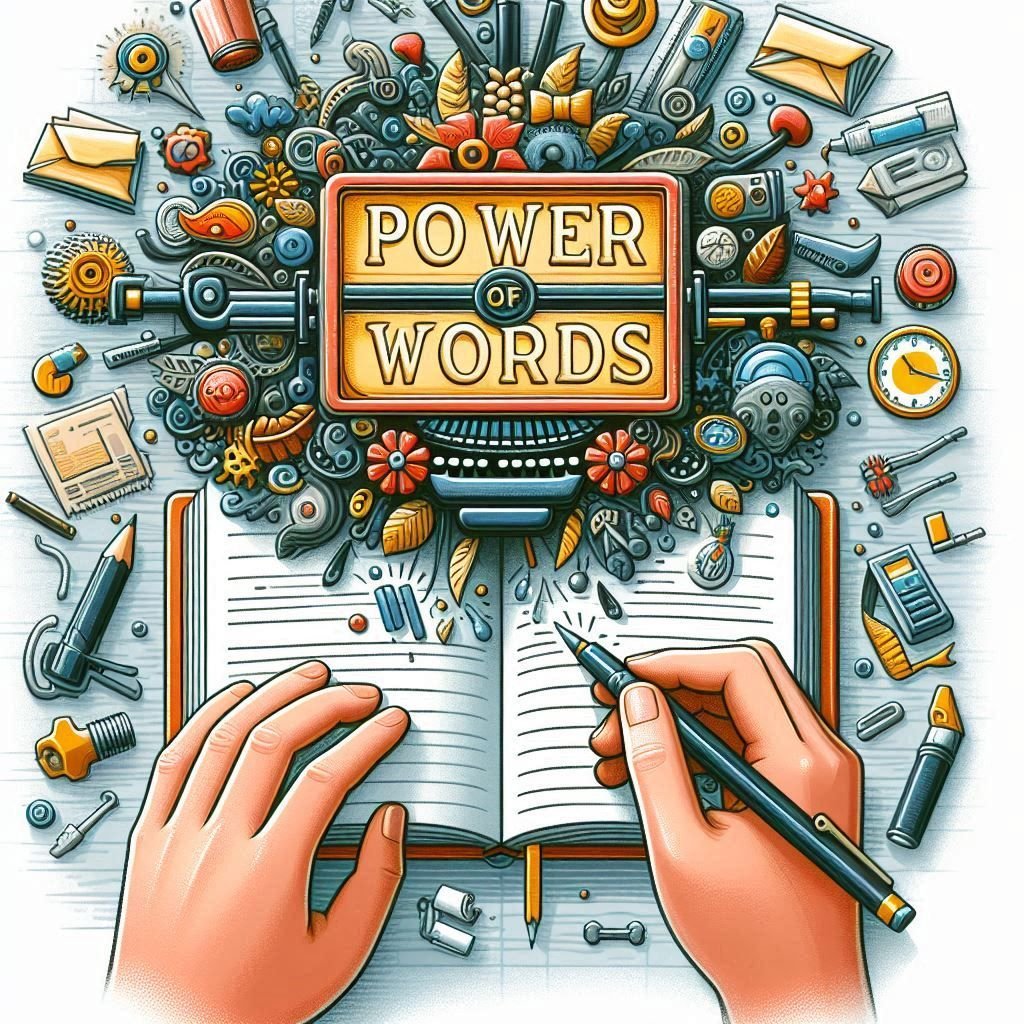Microsoft Word for Writers: Tools and Techniques for Crafting Your Manuscript
Microsoft Word is an indispensable tool for writers, offering a myriad of features to aid in the crafting of manuscripts. From formatting to editing, Word provides writers with everything they need to produce professional-quality documents.
Introduction to Microsoft Word
Microsoft Word has been a cornerstone for writers for decades, evolving to meet the needs of modern writers. Its comprehensive suite of tools makes it ideal for writing, editing, and formatting manuscripts. Learn more about its features on the official Microsoft website.
Essential Tools for Writers
Word offers a variety of tools designed specifically for writers. These tools enhance productivity and streamline the writing process. Discover how these tools can benefit your writing by visiting the TechRadar guide.
Formatting Tools
Proper formatting is crucial for any manuscript. Word’s formatting tools allow writers to create consistent and professional-looking documents. For a comprehensive overview, check out the Microsoft Support page.
Editing and Proofreading Tools
Microsoft Word includes powerful editing and proofreading tools, such as spell check, grammar check, and the Thesaurus. These tools help writers polish their manuscripts. Learn more about these features on the Lifewire guide.
Collaboration Tools
Word’s collaboration tools, including Track Changes and Comments, enable writers to work with editors and peers seamlessly. These tools are essential for refining manuscripts. Find detailed information on the How-To Geek article.
Techniques for Effective Writing
Utilizing Microsoft Word effectively can significantly improve your writing. Implementing certain techniques can enhance the quality and clarity of your manuscripts. Explore some of these techniques on the Writing Cooperative blog.
Using Templates
Word offers a wide range of templates that can save time and ensure consistent formatting. Templates are particularly useful for standardizing the look of your manuscript. For more details, visit the How-To Geek guide.
Implementing Styles
Styles in Word allow you to apply consistent formatting throughout your document with ease. This feature is especially helpful for long manuscripts. Learn how to use styles effectively on the PCWorld guide.
Keyboard Shortcuts
Mastering keyboard shortcuts can greatly enhance your efficiency when using Microsoft Word. These shortcuts save time and streamline the writing process. Check out the Microsoft Support page for a list of useful shortcuts.
Tables: Key Tools and Techniques
Here’s a table summarizing some of the key tools and techniques in Microsoft Word for writers:
| Tool/Technique | Description | Source |
|---|---|---|
| Formatting Tools | Create consistent and professional-looking documents. | Microsoft Support |
| Editing Tools | Includes spell check, grammar check, and Thesaurus. | Lifewire |
| Collaboration Tools | Track Changes and Comments for seamless collaboration. | How-To Geek |
| Templates | Save time and standardize document formatting. | How-To Geek |
| Styles | Apply consistent formatting easily throughout the document. | PCWorld |
| Keyboard Shortcuts | Enhance efficiency with time-saving shortcuts.</ |
Introduction
Every writer needs a set of reliable tools to enhance their productivity and streamline their writing process. In this article, we will explore the essential tools for writers that can make a significant difference in your writing journey.
Writing Software
Microsoft Word
Microsoft Word remains a staple for writers due to its extensive features and ease of use. With robust formatting options and cloud integration, it’s a go-to tool for many professionals.
Scrivener
Scrivener is tailored for long-form writing, offering tools to organize notes, research, and manuscripts. It’s a favorite among novelists and screenwriters alike.
Google Docs
Google Docs allows for real-time collaboration, making it ideal for team projects. Its cloud-based platform ensures your work is accessible from anywhere.
Editing Tools
Grammarly
Grammarly is an advanced proofreading tool that checks grammar, punctuation, and style. Its AI-powered suggestions help improve the quality of your writing.
Hemingway Editor
Hemingway Editor highlights complex sentences and common errors, promoting clearer and more concise writing. It’s a valuable tool for any writer aiming for readability.
Research Tools
Evernote
Evernote is perfect for organizing research materials. You can save articles, web pages, and notes in one place, accessible from any device.
Zotero
Zotero helps manage and cite research sources. It’s especially useful for academic writing, integrating seamlessly with Microsoft Word and Google Docs.
Organizational Tools
Trello
Trello uses boards and cards to help you organize tasks and projects visually. It’s highly effective for writers who juggle multiple projects.
Notion
Notion is a versatile tool that combines notes, tasks, and databases. Its flexibility makes it suitable for writers looking to streamline their workflow.
Collaboration Tools
Slack
Slack facilitates communication and collaboration within teams. Its integration with other tools makes it invaluable for writers working in groups.
Dropbox
Dropbox provides cloud storage solutions, allowing writers to share and collaborate on documents easily. It’s a secure way to keep your files accessible.
Publishing Tools
Reedsy
Reedsy offers a marketplace of professional services for writers, from editing to design. It’s a one-stop shop for self-publishing.
Kindle Direct Publishing
Kindle Direct Publishing allows writers to publish and sell their books on Amazon. It’s a powerful platform for reaching a global audience.
Table: Comparison of Writing Tools
| Tool | Key Features | Best For |
|---|---|---|
| Microsoft Word | Comprehensive formatting, cloud integration | General writing |
| Scrivener | Organizing long-form content | Novelists, screenwriters |
| Google Docs | Real-time collaboration, cloud-based | Team projects |
| Grammarly | Grammar, punctuation, style checks | Proofreading |
| Hemingway Editor | Readability, concise writing | Editing |
Pros and Cons
Microsoft Word
Pros
- Comprehensive formatting options for professional documents.
- Integration with cloud services like OneDrive for easy access.
- Wide range of templates to jumpstart your writing projects.
Cons
- Can be overwhelming with its extensive features for casual writers.
- Requires a subscription for full access to all features.
- Formatting issues when collaborating with users of other word processors.
Grammarly
Pros
- AI-powered grammar and punctuation checks in real-time.
- Improves writing style and clarity with contextual suggestions.
- Available as a browser extension, integrates with various writing platforms.
Cons
- Premium version required for advanced features like plagiarism detection.
- May not always catch nuanced writing errors or stylistic preferences.
- Dependent on internet connectivity for full functionality.
Evernote
Pros
- Organize notes, research materials, and ideas in one place.
- Sync across devices for access anywhere, anytime.
- Tagging and searching capabilities for easy retrieval of information.
Cons
- Free version has limited storage and offline access options.
- Advanced features require a premium subscription.
- Interface can be overwhelming for new users.
FAQs
Q: What are the essential tools every writer should have?
A: Essential tools for writers include word processing software like Microsoft Word or Google Docs, grammar checking tools such as Grammarly, organizational tools like Evernote or Trello, and publishing platforms such as Kindle Direct Publishing.
Q: How can Microsoft Word benefit writers?
A: Microsoft Word offers comprehensive formatting options, cloud integration for easy access to documents, and a range of templates to assist in various writing projects. It’s ideal for professional document creation and editing.
Q: What is Grammarly, and how does it help writers?
A: Grammarly is an AI-powered writing assistant that checks grammar, punctuation, and style in real-time. It helps writers improve the clarity and readability of their writing with contextual suggestions and integrates seamlessly with various writing platforms.
Q: Why should writers use Evernote?
A: Evernote allows writers to organize notes, research materials, and ideas in one place. It offers syncing across devices, tagging, and searching capabilities, making it easy to access and manage information from anywhere.
Q: What are the advantages of using Scrivener for writing?
A: Scrivener is designed for organizing and structuring long-form writing projects like novels or screenplays. It provides tools for outlining, note-taking, and manuscript management, catering specifically to the needs of writers working on complex projects.
Q: How can writers benefit from using Dropbox?
A: Dropbox provides cloud storage solutions, enabling writers to store, share, and collaborate on documents securely. It’s convenient for accessing files from different devices and sharing work with editors or collaborators.
Q: What publishing options are available for writers?
A: Writers can self-publish their books using platforms like Kindle Direct Publishing (KDP) on Amazon. These platforms offer global distribution, control over pricing and royalties, and access to a wide audience of readers.
Introduction
In the realm of business, finance, and personal decisions, disclaimers and cautionary advice play a crucial role in guiding individuals and organizations. This article explores the significance of disclaimers, the necessity of exercising caution, and provides examples of cautionary tales that underscore their importance.
Understanding Disclaimers
Disclaimers are statements intended to limit liability and clarify the boundaries or expectations of a service, product, or advice. They are commonly used in legal documents, financial disclosures, and informational materials to inform users about potential risks and responsibilities. For detailed legal perspectives, visit reputable sources like Cornell Law School.
Importance of Caution
Caution is essential in decision-making processes to mitigate risks and avoid potential pitfalls. It involves thorough research, critical analysis, and seeking advice from reliable experts or sources. Explore cautionary tales from renowned publications like Forbes and The New York Times to understand real-world examples.
Examples of Cautionary Tales
Numerous cautionary tales highlight the repercussions of ignoring disclaimers and exercising poor judgment. From financial investments gone awry to health-related missteps, these stories serve as reminders of the importance of informed decision-making. Learn more from cautionary tales featured on reputable platforms such as BBC and The Guardian.
Table: Comparison of Cautionary Tales
| Case Study | Lesson Learned | Source |
|---|---|---|
| Financial Investment Scam | Importance of due diligence before investing. | Financial Times |
| Healthcare Misinformation | Verifying sources for accurate medical advice. | WebMD |





